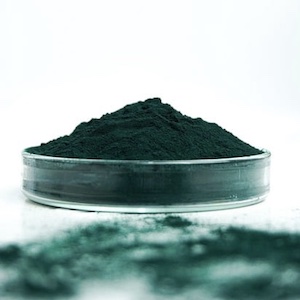The mechanism of action of Spirulina as antidiabetic: a narrative review

Accepted: 15 September 2023
HTML: 818
All claims expressed in this article are solely those of the authors and do not necessarily represent those of their affiliated organizations, or those of the publisher, the editors and the reviewers. Any product that may be evaluated in this article or claim that may be made by its manufacturer is not guaranteed or endorsed by the publisher.
Authors
Spirulina happens to be a special type of blue-green algae that originally emerged 3.5 billion years ago and was used as a source of nutrition. Spirulina gets its name from the filaments’ spiral or helical structure, but its true name is taxonomically Genus Arthrospira which encompasses several species. The most common species are S. fusiformis, S. maxima, and S. platensis. It is rich in various nutrients and chemical components including protein, carbohydrates, lipids, vitamins, minerals, pigments, chlorophyll, and enzymes. Spirulina’s active molecules and rich nutrients make it have several pharmacological activities and uses including antioxidant, anti-inflammatory, immunomodulatory, immune system booster, anticancer, antiviral activity, and neuroprotective properties. It is also utilized as a nutritional supplement and for weight loss. Moreover, several studies confirm that Spirulina improves insulin sensitivity and reduces blood glucose levels in rat models as well as diabetic patients. The reason behind this unique behavior could be credited to the presence of several active components in it, but the action’s fundamental mechanism is still a matter of debate. Several studies have suggested different mechanisms including anti-inflammatory activity, increased insulin sensitivity, inhibition of gluconeogenesis, antioxidant activity, modulating gut microbiota composition, improved glucose homeostasis, and insulin receptor activation. Therefore, it became clear that Spirulina is a mine of active substances used as a nutritional supplement and reduces blood glucose levels or used in conjunction with other treatments to tackle type 2 diabetes. Further exploration is required to fully explain its effects on human physiology and determine optimal dosages for treatment.
How to Cite

This work is licensed under a Creative Commons Attribution-NonCommercial 4.0 International License.
PAGEPress has chosen to apply the Creative Commons Attribution NonCommercial 4.0 International License (CC BY-NC 4.0) to all manuscripts to be published.

 https://doi.org/10.4081/itjm.2023.1639
https://doi.org/10.4081/itjm.2023.1639



